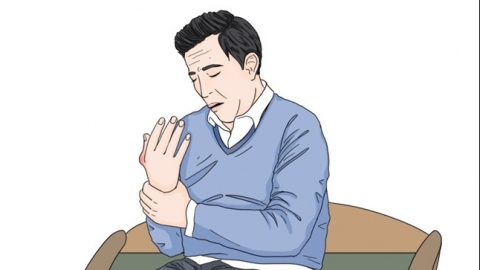What are the symptoms of gout?
Generally, the symptoms of gout mainly include severe joint pain, redness, swelling and warmth of the joint, limited joint mobility, formation of tophi, and joint deformities. If discomfort symptoms appear, it is recommended to seek timely treatment at a regular hospital. Detailed analysis is as follows:
1. Severe Joint Pain
Abnormal metabolism of uric acid in the body leads to deposition of urate crystals in the joints, irritating the joint synovium and causing acute inflammation, resulting in severe joint pain. The pain often occurs suddenly, with more pronounced symptoms at night or in the early morning. It commonly affects the big toe, ankle, knee, and other joints. The pain is intense and often unbearable for patients.
2. Redness, Swelling, and Warmth of the Joint
The inflammatory response caused by urate crystal deposition leads to congestion and edema of the surrounding joint tissues. Meanwhile, the release of inflammatory factors increases the local temperature, causing redness, swelling, and warmth in the joint area. The affected joint feels hotter than the surrounding skin upon touch, appears red and swollen, and pressing on it intensifies the pain.

3. Limited Joint Mobility
Joint redness, pain, and inflammation-induced tissue adhesions affect normal joint function, resulting in limited mobility. Patients are unable to bend or extend the affected joints normally, and daily activities such as walking and standing are affected. In severe cases, the affected joint may even become immobile.
4. Formation of Tophi
Long-term elevated uric acid levels lead to extensive deposition of urate crystals in the joints and surrounding soft tissues, gradually forming hard nodules of varying sizes known as tophi. Tophi commonly occur in areas such as the fingers, toes, and earlobes. The nodules are firm in texture, and the overlying skin may become thin. In severe cases, the skin may ulcerate and discharge a white powdery substance.
5. Joint Deformities
Repeated gout attacks over a long period cause continuous deposition of urate crystals, which damage the joint cartilage and bone structure, leading to changes in joint architecture and resulting in joint deformities. The affected joints appear abnormal, such as thickened and bent finger or toe joints, severely affecting joint function and potentially leading to disability.
If any of the above symptoms are noticed, dietary control is necessary in daily life. Intake of high-purine foods such as animal offal, seafood, and beer should be reduced, and increased water consumption is recommended to promote uric acid excretion. Vigorous exercise and joint exposure to cold should be avoided to reduce triggers for gout attacks.






